The Evolution of Sex Toys: A Historical Perspective

Introduction to the History of Sex Toys
Sex toys have been a part of human history for centuries, serving as instruments of sexual pleasure and exploration. The use of these devices can be traced back to ancient civilizations, revealing much about the societal attitudes towards sexuality at different points in time. Throughout history, various cultures have employed sex toys for diverse purposes, ranging from personal pleasure to religious and ritualistic practices.
In ancient China, for instance, early forms of sex toys were crafted using materials such as bamboo and stone, primarily utilized by individuals seeking to enhance their sexual experiences. Similarly, artifacts from ancient Greece and Rome suggest that sex toys were common among the populace, often associated with erotic art and literature. These historical examples illustrate how sex toys served not only as tools for pleasure but also as means of exploring sexual identity, orientation, and desires.
<pthe a=”” aimed=”” although=”” and=”” at=”” attitudes=”” between=”” by=”” celebrated,=”” centuries.=”” characterized=”” complex=”” conservative=”” cultures,=”” deemed=”” deep-seated=”” devices=”” era=”” era,=”” faced=”” for=”” have=”” human=”” in=”” indicating=”” invention=”” it=”” marked=”” morality,=”” norms=”” of=”” on=”” or=”” others,=”” over=”” p=”” paradoxically=”” particularly=”” period=”” promoted=”” repressive=”” saw=”” sex=”” sexual=”” sexuality,=”” sexuality.
As society evolved, so too did perspectives on sex toys. The sexual revolution of the 1960s and 70s brought about a cultural shift, leading to greater acceptance and exploration of sexual pleasure. Today, sex toys are widely recognized for their role in enhancing personal pleasure and fostering sexual health, reflecting a much more open discourse surrounding individual sexuality. Understanding the historical context of sex toys not only sheds light on their significance in human culture but also underscores the ongoing evolution of societal attitudes toward sexual expression.
Ancient Origins: The Earliest Evidence of Sexual Aids
The exploration of sexual aids can be traced back to ancient civilizations, where various artifacts provide insight into early human sexuality and the cultural practices surrounding it. Archaeological digs have unearthed a range of objects that suggest the use of sexual toys, demonstrating a historical acknowledgment of sexual pleasure. These findings are not only fascinating but also crucial for understanding the evolution of human intimacy.
One of the most notable examples includes the discovery of phallic-shaped objects from the prehistoric era. Dating as far back as 28,000 years ago, these artifacts have been found in sites across Europe and Asia. Often made from stone, ivory, or wood, they indicate that early humans recognized the importance of sexual stimulation. Such objects were likely utilized by individuals to enhance sexual experiences, and they underscore a deeply ingrained relationship between sexuality and personal satisfaction.
Additionally, the ancient Greeks and Romans contributed significantly to the history of sexual aids. They used a variety of objects, including dildos fashioned from materials such as leather and other pliable substances. Textual references from ancient literature, such as works by the philosopher Aristophanes, discuss the use of such devices, suggesting that their societal acceptance was relatively common. This indicates that, even thousands of years ago, individuals sought ways to enhance their sexual experience, affirming the long-standing significance of sexual aids across cultures.
Moreover, in ancient China, the practice of using vibrators can be traced back centuries. Texts from the Han Dynasty depict the use of objects like the “Yin Yang tools,” which illustrate an understanding of sexual pleasure that transcended mere reproduction. Instead, these practices reveal a cultural appreciation for sexual well-being. As such, the evolution of sexual aids reflects not only individual desires but also broader societal norms surrounding intimacy and pleasure.
The Role of Religion and Mythology in Sex Toy Usage
Throughout history, religion and mythology have played significant roles in shaping cultural perceptions of sexuality and the tools used to enhance sexual experiences, including sex toys. In various societies, these objects were often intertwined with spiritual beliefs, embodying fertility, divine pleasure, and the sacredness of sexual intimacy. For instance, in ancient cultures, fertility symbols, such as phallic representations, were prevalent in religious rituals aimed at invoking agricultural success or ensuring human procreation.
In Hinduism, the worship of the lingam, a representation of the god Shiva, highlights the fusion of sexuality with spirituality. This object is often associated with fertility and regeneration, which underscores the sacred nature of sexual practices in certain religious contexts. During rituals, devotee offerings may include objects that symbolize sexuality, emphasizing the belief that sexual energy is a divine force connected to creation and life.
Similarly, in ancient Greek and Roman mythology, deities such as Priapus and Venus embodied sexual vitality and attraction. The use of phallic amulets and figurines in these cultures can be interpreted as both protective talismans and symbols of sexual prowess and fertility. These mythological narratives fostered an open-minded approach toward sexual expression, leading to a societal acceptance of certain sexual practices that included the use of objects to enhance pleasure.
Moreover, in indigenous cultures, various rituals and practices involve the utilization of objects linked to sexual expression and fertility. For instance, in some Native American traditions, sacred objects were used in ceremonies to celebrate the union of male and female energies, merging sexuality with spirituality. The integration of these elements into rituals reflects a cultural understanding of sex not merely as a physical act but as a vital component of life that perpetuates societal continuity.
As such, religion and mythology continue to inform perceptions of sex toys across different cultures, fostering both acceptance and creativity in the ways sexual tools are designed and utilized to enhance human intimacy.
The Middle Ages to the Renaissance: A Shift in Attitudes
The medieval period, spanning roughly from the 5th to the late 15th century, was characterized by a pronounced restriction on sexual expression, enforced primarily by the prevailing religious doctrines of Christianity. This era regarded sexuality as inherently sinful, with pleasure viewed as morally questionable. As a result, public discussions surrounding sexual health and education were largely suppressed, leading to a societal landscape in which sex toys were shunned and deemed taboo. Notably, this religious repression did not erase the practice of using sex toys but rather pushed it underground.
In contrast, the Renaissance, which blossomed in the 14th century, heralded a significant transformation in attitudes towards sexuality and human expression. As art and literature flourished, so too did the exploration of sexuality as a natural aspect of human life. This period marked a gradual shift where individuals began to challenge the existing societal norms. The resurgence of classical knowledge and sensuality encouraged a more open discussion about sexual pleasure and desire. However, even during the Renaissance, sex toys still remained largely hidden due to the persistent, overarching influence of religious conservatism.
The clandestine use of sex toys blossomed during these centuries, often manifesting in private settings. Various forms of hidden, improvised devices emerged, reflective of a society attempting to navigate the dichotomy of pleasure and repression. Groups engaged in underground movements, arranging secretive meetings where discussions and practices related to sexual pleasure could flourish away from the watchful eyes of authorities. Not only did this challenge societal norms, but it also encouraged exploration among individuals who sought to reclaim their sexual autonomy. The Middle Ages and the Renaissance thus serve as pivotal points in the evolution of sex toys, illustrating how oppressive attitudes towards sexuality gave rise to a counterculture that dared to embrace pleasure.
The Age of Enlightenment and the Birth of Modern Sexuality
The Age of Enlightenment, spanning the late 17th to the early 19th centuries, marked a significant transformation in attitudes towards sexuality, education, and personal freedoms. This intellectual movement embraced reason, individualism, and skeptical inquiry, contributing to a broader understanding of human sexuality. The era prompted an exploration of erotic literature, which not only reflected emerging sexual norms but also played a pivotal role in shaping contemporary sexual dialogues.
During this period, sexuality transitioned from a taboo subject to one worthy of academic and artistic examination. Prominent thinkers like John Locke and Jean-Jacques Rousseau influenced societal views on pleasure and sexual rights, paving the way for a more open discussion about human desires. The proliferation of erotic literature provided a platform for these evolving ideas, allowing readers to explore sexual fantasies and experiences that were previously considered unspeakable. This surge in written works began to challenge the traditional mores surrounding sex, advocating for a more liberated sexual expression.
The Enlightenment era also coincided with advancements in technology and craftsmanship, leading to the creation of more refined and specialized sex toys. Unlike their rudimentary predecessors, these objects showcased intricate designs and materials, signifying a departure towards enhanced sexual pleasure. The development of new manufacturing techniques allowed for the mass production of these items, making them more accessible to the general public. Consequently, sex toys became not only symbols of pleasure and desire but also reflections of the shifting attitudes toward sexuality. As both an expression of personal enjoyment and a tool of sexual exploration, these devices represented a growing recognition of individual sexual agency, illustrating a fundamental change in how society viewed pleasure and intimacy.
The Industrial Revolution: Technological Advancements
The Industrial Revolution, spanning the late 18th to early 19th centuries, marked a significant turning point in various sectors, including the manufacturing and design of sex toys. This era brought about groundbreaking technological advancements that enabled the mass production of numerous items, including those intended for sexual pleasure. One of the pivotal changes during this time was the introduction of new materials, particularly rubber and later silicone. These materials not only made sex toys more affordable but also expanded the variety and functionality available to consumers.
Prior to the Industrial Revolution, sex toys were typically handcrafted, limiting their availability and accessibility. However, as factories emerged and production techniques evolved, manufacturers began to utilize rubber as a means to create more durable and flexible products. The ability to manufacture items at a larger scale meant that these products could be sold at lower prices, allowing a broader segment of the population access to sex toys. This period also saw the development of vibrating devices, which were initially marketed as medicinal instruments for women, emphasizing the convergence of technology and sexual wellness.
Furthermore, by the late 20th century, the introduction of silicone revolutionized the sex toy industry yet again. Silicone offered a body-safe alternative that was not only hygienic but also easier to clean compared to earlier materials. This innovation enhanced user experience and safety, thereby contributing to the normalization of sex toys in society. Consumers began to expect higher quality, aesthetically pleasing designs, and this pushed manufacturers to innovate further. The evolution of sex toys during the Industrial Revolution laid the groundwork for a diverse and ever-expanding industry, highlighting the profound impact of technological advancements in shaping the realm of sexual health and pleasure.
The 20th Century: The Sexual Revolution and Beyond
The 20th century marked a significant turning point in societal attitudes towards sex and sexuality, particularly during the 1960s and 1970s. This era, often referred to as the sexual revolution, emerged from a confluence of cultural, political, and social changes that challenged traditional notions of sexual morality. At the forefront of this transformative movement was the feminist movement, which championed women’s rights and highlighted the importance of sexual pleasure and autonomy.
The feminist movement played a crucial role in advocating for women’s sexual liberation, creating a space where discussions about sexual health, pleasure, and rights became more accessible. As women began to assert their desires and needs, they sought to redefine the narratives surrounding female sexuality. In doing so, they paved the way for a burgeoning industry focused on sexual wellness, leading to a substantial increase in the availability and variety of sex toys. This industry shift reflected a growing acceptance of personal pleasure and self-exploration.
During this period, sex toy companies began to emerge, offering products that specifically catered to a wider range of desires and preferences. From vibrators to dildos, the market saw an explosion of variety, with products designed to empower users in exploring their own sexualities. Additionally, the increased representation of sex toys in popular culture helped destigmatize their use, further normalizing conversations around sexual pleasure. The printing of more explicit materials and the launch of sex-positive publications contributed significantly to the discourse, helping individuals approach their own sexuality with curiosity and confidence.
The 1970s particularly witnessed the breaking of taboos surrounding sexual pleasure as sex-positive attitudes permeated mainstream media. This era heralded a new understanding of intimacy and well-being, allowing individuals to embrace a more holistic view of their sexual experiences. The evolution in the perception of sex toys from mere objects to symbols of empowerment and liberation marked a pivotal moment in the ongoing journey toward sexual equality.
The Rise of Technology: Digital and Smart Sex Toys
In recent years, the landscape of sex toys has undergone significant transformation, largely due to advancements in technology. The emergence of digital and smart sex toys marks a new phase in the evolution of pleasure products, allowing users to explore their sexuality in innovative ways. These modern devices, enhanced by technology, come equipped with features such as app connectivity and remote controls, which not only elevate the user experience but also redefine intimacy between partners.
One of the most notable advancements in smart sex toys is their ability to connect to smartphones via Bluetooth. This connection facilitates a range of functionalities, including the ability to customize vibration patterns, adjust intensity levels, and even program usage based on user preferences. Additionally, many of these products are now designed to respond to voice commands or sync with music, creating a more immersive and personalized experience.
Moreover, the rise of remote-controlled sex toys has redefined long-distance intimacy. Partners can now share pleasurable experiences across vast distances, thanks to apps that allow one partner to control the toy from anywhere in the world. This capability fosters a sense of closeness and connection, enhancing the emotional bond between partners. Whether couples are separated by work commitments or geographical boundaries, these smart devices can facilitate intimacy in ways that were previously unimaginable.
As technology continues to shape the future of pleasure products, it is essential to consider the implications of these advances on relationships. The integration of smart toys into intimate experiences can promote open communication about desires and preferences, contributing positively to sexual health and wellness. However, it also raises questions about privacy and data security that users should be mindful of when engaging with such products.
Overall, the rise of digital and smart sex toys represents a progressive shift in how individuals and couples approach their sexual experiences. This evolution invites users to embrace their sexuality while taking advantage of the benefits of modern technology.
Future Trends: What Lies Ahead for the Sex Toy Industry?
The sex toy industry has witnessed significant changes over the past few decades, and as we look toward the future, several emerging trends are poised to shape its direction. One of the central themes is the increasing acceptance of diverse sexualities and identities. With ongoing conversations surrounding gender fluidity and LGBTQ+ rights, the industry is expected to expand its product offerings to cater to various preferences and orientations. This inclusivity not only provides a broader array of options for consumers but also encourages more open discussions about pleasure and sexuality.
Technological advancements are another key factor that will influence the future of sex toys. The integration of smart technology and connectivity features into sex toys is already gaining traction, allowing users to enhance their experiences through apps and remote interactions. These innovations not only aim to improve user satisfaction but also empower individuals to explore their desires in new ways. The potential for Internet of Things (IoT) integration could further revolutionize personal pleasure by enabling real-time feedback and personalized recommendations.
Moreover, as sustainability becomes a principal concern across industries, the sex toy sector is likely to see a shift toward eco-friendly and body-safe materials. Manufacturers are expected to prioritize sustainability by exploring biodegradable and recyclable options. Such a focus aligns with the growing consumer demand for ethical and environmentally conscious products.
Lastly, the future of the sex toy industry may also witness a continued challenge to societal norms surrounding pleasure. As taboos surrounding sexual wellness gradually diminish, it is likely that sex toys will become more mainstream, integrated into health discussions, relationships, and even educational platforms. This evolution will not only normalize the conversation around sexual pleasure but also contribute to a healthier understanding of sexuality.





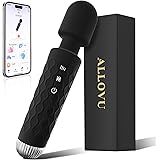
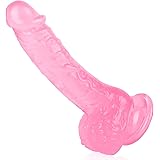



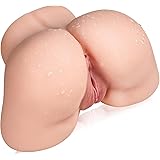









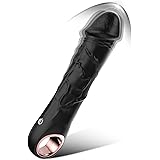
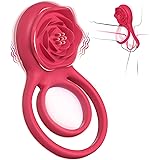
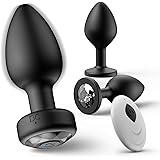
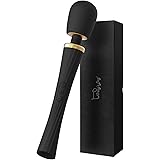


Leave a Reply